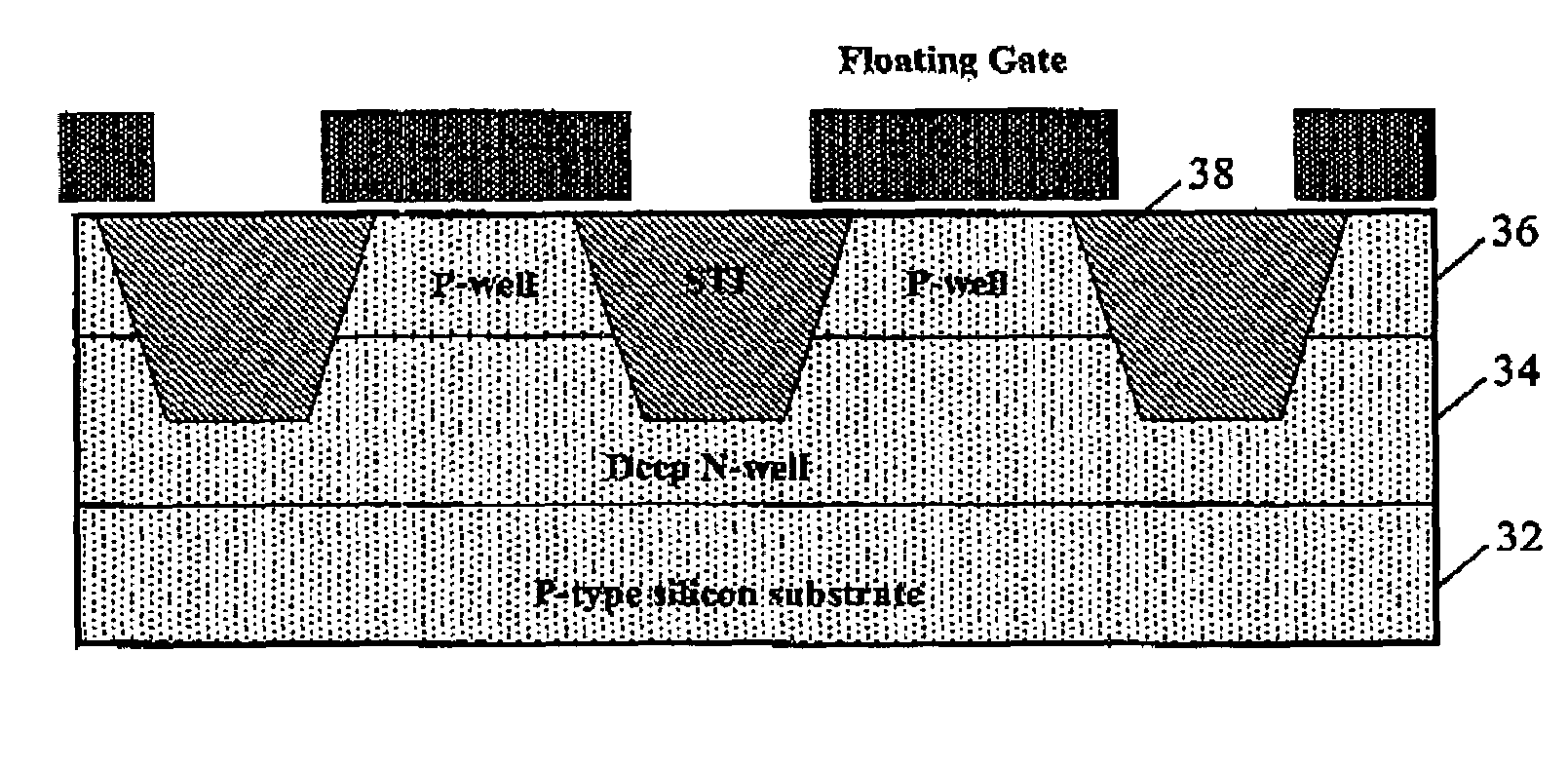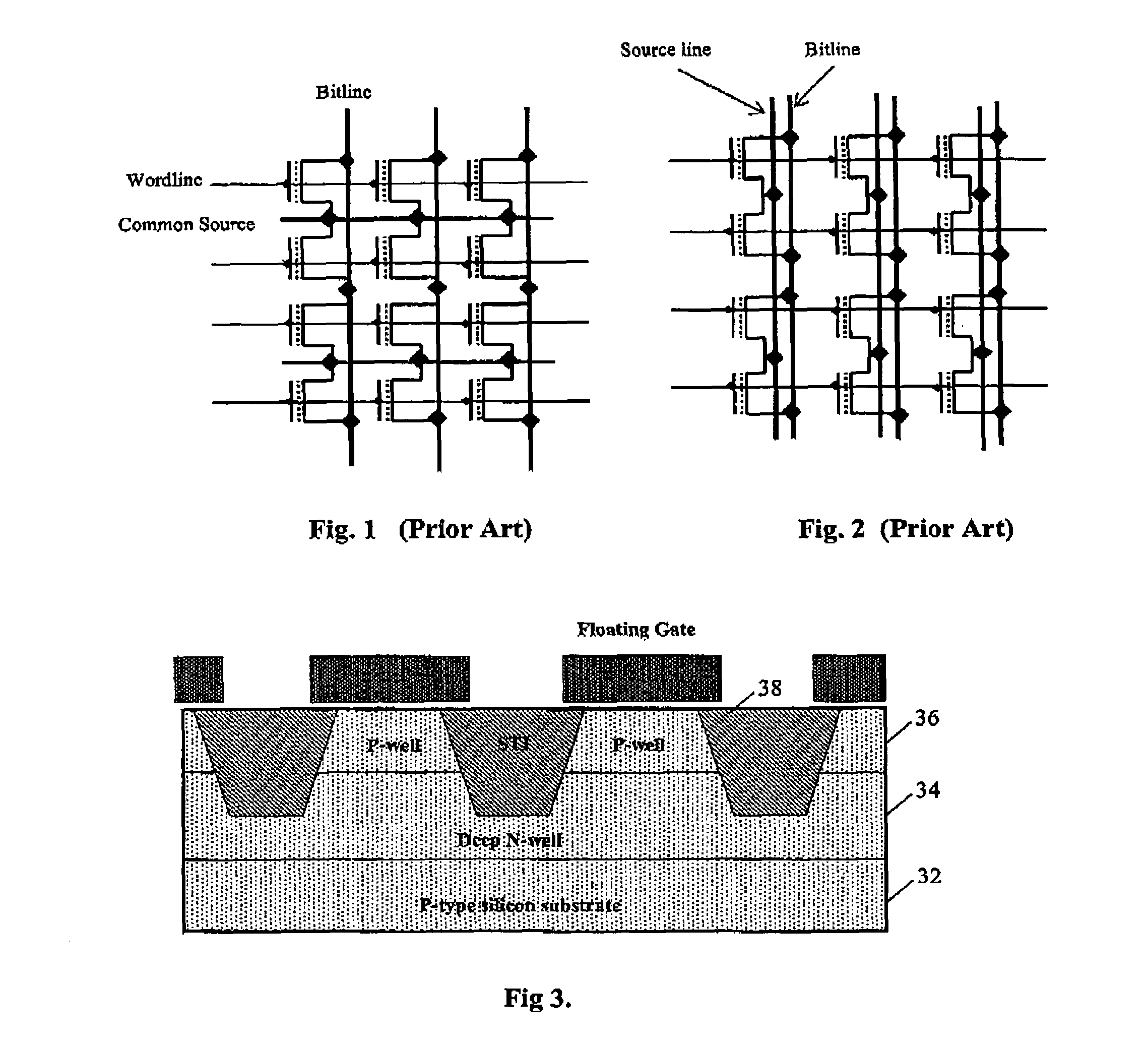Low voltage EEPROM memory arrays
a memory array and low voltage technology, applied in the field of eeprom memory cells and memory arrays, can solve the problems of high current, difficult to reduce the cell size of memory cells, high power consumption for operation, etc., and achieve the effect of increasing the cell read current of the memory array
- Summary
- Abstract
- Description
- Claims
- Application Information
AI Technical Summary
Benefits of technology
Problems solved by technology
Method used
Image
Examples
Embodiment Construction
[0053]In accordance with the principles of the present invention, a non-volatile memory array includes memory cells formed in columns of isolated well regions and connected in a common source arrangement so that Fowler-Nordheim (FN) tunneling is used for both program (write) and erase operations of the memory cells. In one embodiment, the memory array of the present invention is formed as a byte alterable EEPROM with parallel access. More specifically, writing of the EEPROM is carried out on each byte while erasing of the EEPROM is carried out selectively on each bit of memory cells. In one embodiment, the memory array of the present invention is formed using NMOS transistors in P-wells isolated by shallow trench isolation. The memory array of the present invention can be formed as a common source NOR array or a common source NAND array. In one embodiment, an insulated gate bipolar transistor (IGBT) is coupled to the memory cells to increase the cell read current of the memory array...
PUM
 Login to View More
Login to View More Abstract
Description
Claims
Application Information
 Login to View More
Login to View More - R&D
- Intellectual Property
- Life Sciences
- Materials
- Tech Scout
- Unparalleled Data Quality
- Higher Quality Content
- 60% Fewer Hallucinations
Browse by: Latest US Patents, China's latest patents, Technical Efficacy Thesaurus, Application Domain, Technology Topic, Popular Technical Reports.
© 2025 PatSnap. All rights reserved.Legal|Privacy policy|Modern Slavery Act Transparency Statement|Sitemap|About US| Contact US: help@patsnap.com



